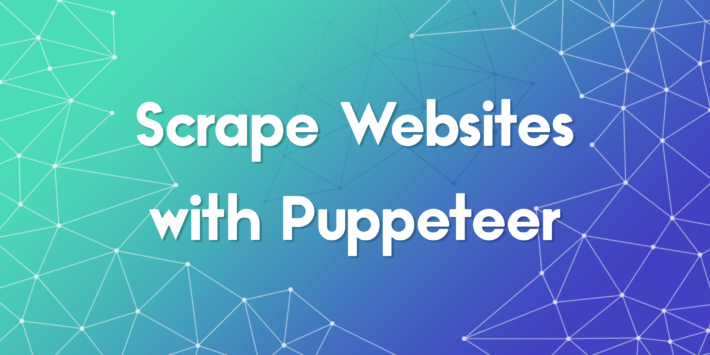How to Scrape Yellow Pages Data with ProxyTee

In today’s data-driven world, acquiring business information from platforms like Yellow Pages is essential for market analysis, lead generation, and competitor profiling. This guide will show you how to scrape Yellow Pages data using Python and ProxyTee. ProxyTee offers rotating residential proxies designed for various internet activities, such as web scraping. With features like unlimited bandwidth, a global IP pool, and auto-rotation, it’s ideal for data gathering without being blocked. Let’s see how to get started.
Project Setup
Before starting, make sure you have Python installed on your computer. Download the latest version from the official Python website.
1️⃣ Install Required Libraries
Install the following Python libraries using pip:
pip install requests bs4
This command installs the requests library for handling HTTP requests and Beautiful Soup for parsing HTML.
2️⃣ Import Libraries
Import the necessary libraries in your Python script:
from bs4 import BeautifulSoup
import requests
3️⃣ Why ProxyTee for Scraping?
To avoid detection while scraping Yellow Pages, it’s crucial to use a reliable residential proxy service like ProxyTee. ProxyTee offers a large pool of rotating IP addresses, which makes it more difficult for websites to detect and block your scraping attempts. It also helps to bypass geo-restrictions and other anti-scraping measures. Its key features are:
- Unlimited Bandwidth: Scrape as much data as you need without worrying about data caps. Learn more.
- Global Coverage: Access a vast pool of over 20 million IP addresses from more than 100 countries. Learn more.
- Auto-Rotation: IP addresses automatically rotate at customizable intervals between 3 to 60 minutes to enhance your anonymity. Learn more.
- Multiple Protocol Support: ProxyTee supports both HTTP and SOCKS5 protocols for greater flexibility. Learn more.
- Easy to use GUI: Get started quickly with the simple and clean GUI design. Learn more.
- Simple API: ProxyTee has a user-friendly API making the integration with workflows easily. Learn more.
- Affordable: ProxyTee provides high quality residential proxies with pricing as low as 50% compared to the competition. Learn more.
4️⃣ Fetch a Yellow Page with ProxyTee
To begin, set up the target URL you intend to scrape, along with your ProxyTee credentials and send an HTTP request:
url = "https://www.yellowpages.ca/bus/Ontario/North-York/The-Burger-Cellar/6835043.html"
proxy_url = "http://user:password@gate.proxytee.com:1234"
proxies = {
'http': proxy_url,
'https': proxy_url
}
response = requests.get(url, proxies=proxies)
print(response.status_code)
Replace user, password and the proxy address with your own credentials. If all goes well, you should get a status_code of 200.
5️⃣ Parse the Content of the Yellow Pages
Now you can extract the HTML content from the response object. With the help of the Beautiful Soup library we can turn the raw text data into a parseable format.
soup = BeautifulSoup(response.content, "html.parser")
The soup object contains the parsed HTML content, and we can use CSS selectors to grab all sorts of business data.
6️⃣ Extract Business Name
Locate the business name within the HTML source code and retrieve it:
name = soup.find('span', {'itemprop': 'name'}).get_text(strip=True)
print(name)
7️⃣ Extract the Business Address
The business address may consist of multiple HTML elements so lets loop through the different parts:
itemprops = ["streetAddress", "addressLocality", "addressRegion", "postalCode"]
address_text = []
for itemprop in itemprops:
address_text.append(soup.find('span', {'itemprop': itemprop}).get_text(strip=True))
address = ', '.join(text for text in address_text if text)
print(address)
8️⃣ Scrape Phone Information
The phone number can be easily extracted in the same way:
phone = soup.find('span', {'itemprop': 'telephone'}).get_text(strip=True)
print(phone)
9️⃣ Extract the Ratings
And lastly extract the ratings information:
ratings = soup.find('span', {'class': 'jsReviewsChart'})['aria-label']
print(ratings)
And that’s all the code needed to scrape key business data from Yellow Pages!
FAQ
Can you Scrape Yellow Pages?
Yes, absolutely. It’s legal to scrape Yellow Pages data as it’s public information. However, it is good practice to seek advice from a legal expert to be sure about any particular usage cases you might have.
How Do I Extract Yellow Pages Data to Excel?
After scraping data from Yellow Pages using Python, you can use the pandas library to export the data into Excel.
How Do You Scrape Yellow Pages in Python?
You can write a Python scraper using libraries like requests, Beautiful Soup, or Scrapy, or just simply get a proxy service from ProxyTee with the simple code above.
For those looking to scale up, consider ProxyTee’s Unlimited Residential Proxy solutions which will make your scraping faster and simpler.


